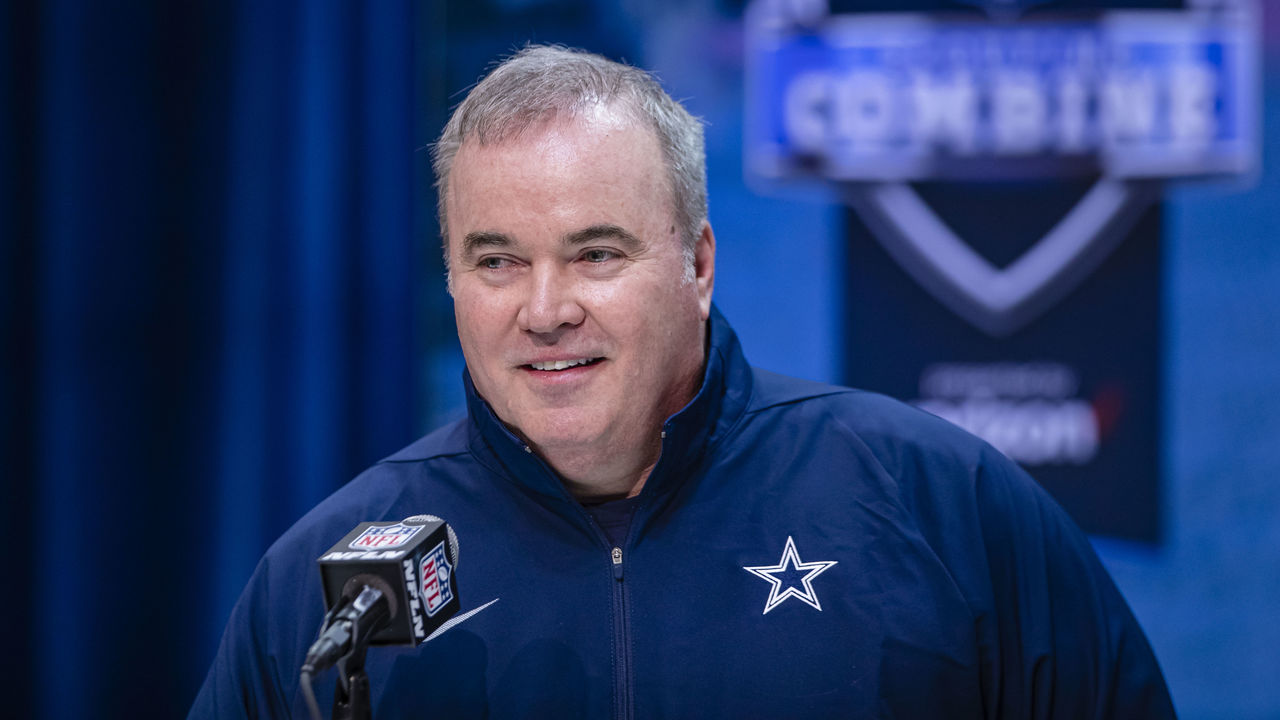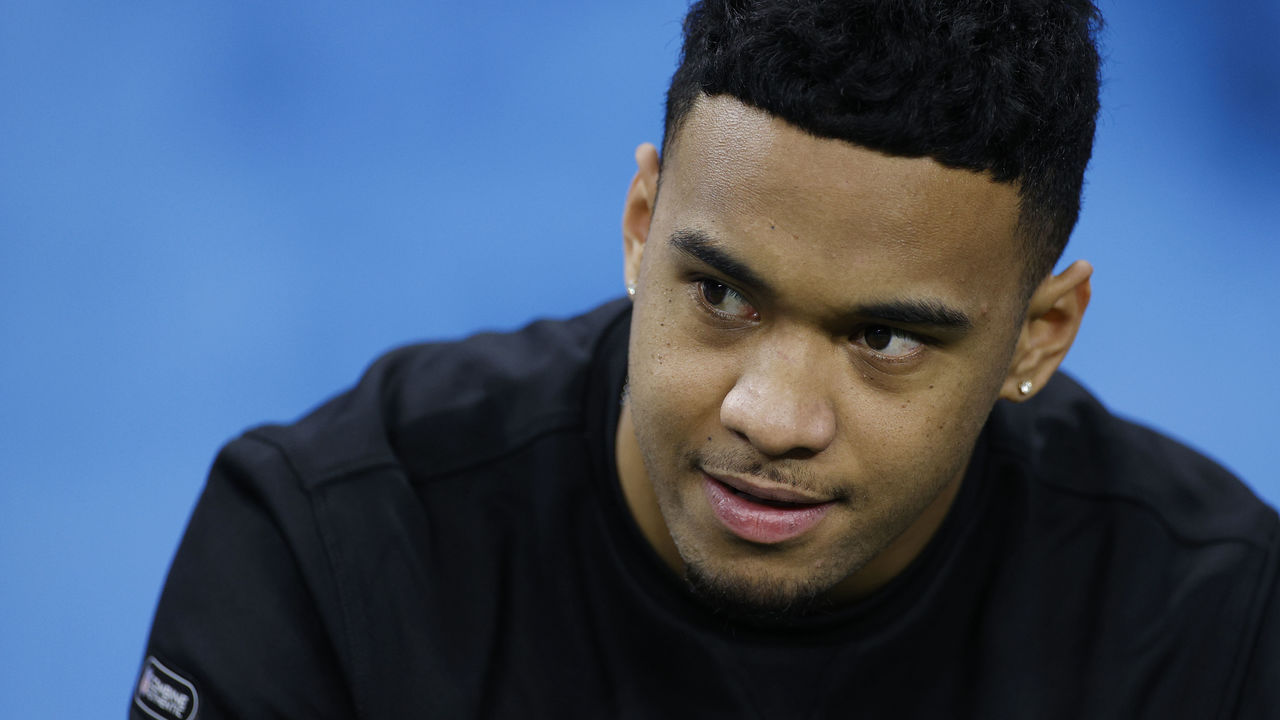Biggest winners and losers from the 2020 NFL Draft
With all seven rounds of the 2020 NFL Draft complete, we evaluate which teams and individuals benefited most, and who received our lowest marks.
Winner: Tom Brady
Tampa Bay did everything it could to provide Tom Brady with what he needs to chase a championship.
Before the draft even started, the Buccaneers used a fourth-round pick to bring future Hall of Fame tight end Rob Gronkowski out of retirement. With the 2020 offseason program and preseason in question due to the coronavirus pandemic, giving Brady a familiar target and someone with whom he already has chemistry should prove valuable.
Sitting at No. 14 with their first-round pick, the Bucs were thought to be out of the running for one of the top four tackles in this year's draft. Then, Tristan Wirfs slid into the teens. It cost Tampa only a fourth-rounder to move up one spot and get someone who had been projected to go as high as the fourth pick. Wirfs should provide immediate protection for the Bucs' soon-to-be 43-year-old quarterback and plug a hole on their offensive line.
In the third and fifth rounds, respectively, Tampa added a pass-catching running back - something Brady has excelled with - in Ke'Shawn Vaughn, and a tough receiver in Tyler Johnson to replace Breshad Perriman.
Both Brady and the Bucs are now all-in on the 2020 season.
- Michael McClymont
Loser: Aaron Rodgers
Watching the receiver-needy Packers not select a single wideout - in the deepest receiver class in years, no less - would likely have been enough to send the famously ornery Rodgers off of the deep end.
But that wasn't even the worst part of the draft for Rodgers. Instead, 15 years after the Packers stunned the football world by ending Rodgers' draft-day freefall despite the presence of beloved franchise icon Brett Favre, Green Bay took a giant leap toward the future by trading up to draft Jordan Love.
Even if Rodgers was close to retirement, Love would still be the riskiest selection of the draft. The Utah State product has been called a poor man's Patrick Mahomes, but even that is probably wishful thinking. After 32 touchdowns and just six interceptions as a redshirt sophomore, Love regressed, leading the nation with 17 interceptions in 2019. Generous appraisals of his development suggest he's a few years away from being pro-ready.
But Rodgers probably isn't at the end of his career. Unlike Favre in 2005, Rodgers has given no indication he's contemplating retirement. His play has undoubtedly fallen off from his MVP years but he still took the Packers to within one game of the Super Bowl in 2019 despite a clear lack of receiving weapons.
Tom Brady won a Super Bowl at 41; Aaron Rodgers is 36 and has indicated he also wants to play into his 40s. If he does, the Packers' investment in Love means Rodgers will probably have to play his final seasons elsewhere. Before Thursday, that notion was unthinkable.
- David P. Woods
Winner: Mike McCarthy

Mike McCarthy faces his share of doubters upon making his return to the sideline with the Cowboys, as the end of his Packers tenure raised significant questions about how well he's adapted to the modern game. We won't have answers in that regard for another few months, but one thing is certain: McCarthy is set up for success in Dallas.
CeeDee Lamb falling to the Cowboys at No. 17 was a twist nobody saw coming. Dallas had more pressing needs, but the opportunity to have the Oklahoma standout form a three-headed monster with Amari Cooper and Michael Gallup was too good to pass up. Nobody would have batted an eye had the Cowboys drafted Trevon Diggs instead to address their cornerback need, but the Alabama product fell to them in the second round, anyway. Neville Gallimore was another good value pick to bolster the defensive line in the third, and Dallas may have found its replacement for recently retired center Travis Frederick in fourth-round pick Tyler Biadasz. All in all, an outstanding haul.
McCarthy couldn't have asked for a more perfect situation to step into after a year out of the league. This is without question one of football's most talented rosters, with no shortage of offensive weapons to do anything McCarthy wants. He'd never say it, but it must feel pretty good to be in such an enviable position while the team that fired him seems perfectly content to not give Aaron Rodgers what he needs for another Super Bowl run.
- Dan Wilkins
Loser: AFC West defenses
Coming off of a Super Bowl title with an offense that may well be impossible to stop, the rest of the NFL finds itself chasing the Chiefs. And no teams are fighting that battle harder than Kansas City's biggest rivals, who each have the unfortunate task of facing Patrick Mahomes twice a year. Every AFC West team made major additions to their offense in this draft. Some were to be anticipated due to obvious roster needs, but it's tough to not also associate the clear focus on one thing: trying to catch the champs.
With two early receiver picks in Jerry Jeudy and KJ Hamler, and a mid-round tight end with plenty of upside in Albert Okwuegbunam, the Broncos have suddenly surrounded second-year quarterback Drew Lock with a potent supporting cast.
The Raiders also placed an emphasis on offensive playmakers, starting their draft with Henry Ruggs III - the fastest receiver in this class - before selecting consecutive skill-position players in the third round in do-it-all weapon Lynn Bowden Jr. and receiver Bryan Edwards.
The Chargers already had a bunch of offensive talent, and drafting Justin Herbert to replace Philip Rivers gives them an athletic young quarterback who could potentially unlock even more upside for that group in the future.
Oh, and the Chiefs added to their already ridiculous offense with Clyde Edwards-Helaire, a phenomenal receiving back who just may be the perfect fit for Andy Reid's offense. Good luck to the AFC West defenses over the next few years.
- Wilkins
Winner: Smokescreens

The Dolphins haven't exactly been the shining example of a well-run organization in recent years. They still have a long way to go before they're deserving of any sort of confidence, but the way they played their hand during the draft process suggests they could be headed in the right direction. Reeling in Tua Tagovailoa was the assumed goal when Miami sold off assets and effectively threw in the towel last season. However, the Dolphins got hot down the stretch, earned more wins than anyone expected, and, suddenly, the No. 5 overall pick left them vulnerable to another team trading up and beating them to the punch.
But as the predraft process continued, rumblings about Miami passing on Tagovailoa in favor of Justin Herbert - or even an offensive lineman - were so loud that they became almost impossible to ignore. And you can bet the same was true for those around the league.
In doing so, the Dolphins could have theoretically dissuaded a quarterback-needy team - such as the Los Angeles Chargers - from parting with the necessary assets to move up to No. 3 or No. 4 to get Tagovailoa. At the same time, Miami made it difficult for the New York Giants, who took Andrew Thomas at No. 4, to trade out of that spot and risk not getting their guy.
Nobody can say for certain whether the Chargers, or any other team, would have jumped Miami for Tagovailoa had it been more clear the Dolphins wanted him, but the organization certainly did its part in trying to prevent such a scenario. The Dolphins kept everyone on their toes with what was always a no-brainer pick. That isn't easy to do.
- Wilkins
Loser: Redskins
The Redskins did get the draft's consensus top prospect in Chase Young with the second overall pick, but this evaluation is more about their draft-day trade.
After months of back-and-forth trade negotiations, Washington finally agreed to deal Trent Williams. And though the team insisted it wouldn't accept anything less than market value - and even sought a second-round pick - for the seven-time Pro Bowl left tackle, the trade left much to be desired.
Backed into a corner on Day 3 of the draft, the Redskins received a fifth-round pick and a 2021 third-rounder from San Francisco for a 31-year-old who is still thought of as one of the best players at one of football's most important positions. The Niners were just as desperate to find a premier tackle with Joe Staley headed for retirement, but general manager John Lynch flexed his negotiating muscles.
The Redskins-Williams union ended in an ugly divorce, and the trade Washington ultimately agreed upon was just as bad.
- McClymont
Winner: Virtual draft
This first-ever "virtual" draft seemed doomed to fail. The NFL's trial run revealed a multitude of technical issues. Social distancing restrictions meant the broadcast had almost nothing in the way of the draft's typical glitz and glamor. No red carpet, no screaming fans, no fireworks - all seemingly necessary supplements to the mundanity of three straight days of names being read off a card.
And then ... it just kinda worked.
Coaches and GMs made picks from their homes (some of them opulent, but many more of them surprisingly plain), offering fans unprecedented access to their lives in a way that humanized these typically larger-than-life figures.
Bill Belichick’s draft room, via ABC pic.twitter.com/Sw0FKOJqkS
— Jeff Howe (@jeffphowe) April 24, 2020
Even the villainous Roger Goodell was relatable, as his fatigue late in Round 3 led him to announce a pick while reclined in his leather chair.
good god man pic.twitter.com/Wpysyz1EKe
— Timothy Burke (@bubbaprog) April 25, 2020
Yes, ESPN focused a little too much on depressing human interest stories, but surrounding those moments was just enough actual football analysis to reassure us all that sports will, eventually, return.
In a frightening and unfamiliar world, this once-in-a-lifetime draft was exactly what sports fans needed.
- Woods
HEADLINES
- NFL Sunday divisional bets: Will Bears have an answer for Stafford?
- Lenoir: 49ers would've won divisional round in 'landslide' if healthy
- Report: Steelers schedule interview with McCarthy for HC opening
- NFL coaching hire grades: Falcons make splash with Stefanski
- Key takeaways and analysis from the divisional round